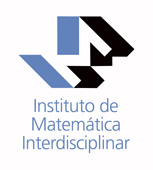Bio
Associate Professor at University Complutense of Madrid since 2015. PhD in Mathematics from University Complutense of Madrid (Spain) in 2009. Academic visitor at Universita degli Studi di Milano (Crema, Italy, 3 months), University of Colorado at Boulder (Boulder, EEUU, 3 months) and the Norwegian University of Science and Technology (Trondheim, Norway, 6+3 months). Collaborator in several projects for International Cooperation for Educational Development (Mozambique).
Research interests
Optimization; Mathematical programming; Commercial and Humanitarian Logistics; Vehicle Routing Problems; Heuristics and Metaheuristics. |
Contact details
|
Selected Publications
-
S. Braaten, Ola Gjønnes, L.M. Hvattum and G. Tirado (2017) “Heuristics for the Robust
Vehicle Routing Problem with Time Windows”, Expert Systems With Applications. 77: 136-147.
-
J.M. Ferrer, M.T. Ortuño and G. Tirado (2016) “A GRASP metaheuristic for humanitarian aid distribution”, Journal of Heuristics. 22: 55-87.
-
A. Felipe, M.T. Ortuño, G. Righini and G. Tirado (2014) “A heuristic approach for the Green Vehicle Routing Problem with Multiple Technologies and Partial Recharges”, Transportation Research Part E: Logistics and Transportation Review. 71: 111-128.
-
F. Liberatore, B. Vitoriano, M.T. Ortuño, G. Tirado, and M.P. Scaparra (2014) “A hierarchical compromise model for the joint optimization of recovery operations and distribution of emergency goods in Humanitarian Logistics”, Computers & Operations Research. 42: 3-13.
-
M.T. Ortuño, G. Tirado, B. Vitoriano and J. Montero (2011) “A multi-criteria optimization model for humanitarian aid distribution”, Journal of Global Optimization 51: 189-208.
|

